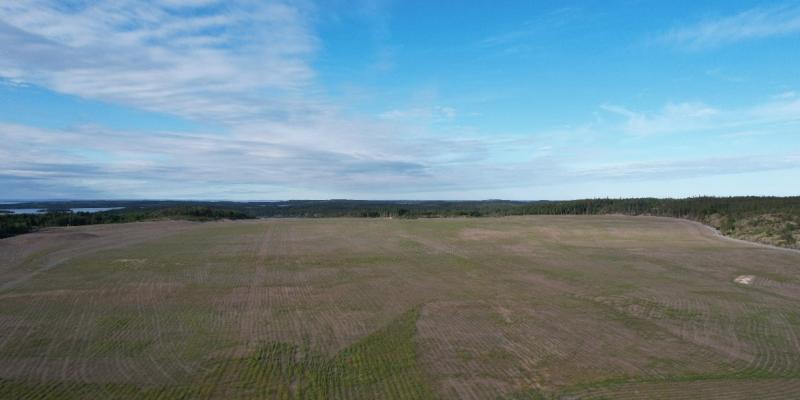Interested in bidding on Gunnar work? Visit SRC's Purchasing and Procurement webpage for more information about our competitive bid opportunities.
Overview
The former Gunnar Mine site is located on the north shore of Lake Athabasca, approximately 25 kilometres southwest of Uranium City.
The mine operated from 1955-1963 and officially closed in 1964 with little to no decommissioning. During operation, the Gunnar Site consisted of:
- An open pit mine (over 100 m deep, 250 m x 300 m in size)
- An underground mine (600 m deep)
- A uranium mill (capacity of 2000 tonnes/day)
- Two acid plants
- Uranium processing buildings
- A community (including a number of residential, public, administrative and technical buildings)
- Approximately 4.4 million tonnes of tailings
- Approximately 2.2 to 2.7 million tonnes of waste rock
When the mine closed a narrow trench was blasted in the rock between the pit and Lake Athabasca to flood the pit and the underground workings. In 1966, the channel was filled with waste rock as a barrier between the pit and the lake.
The Gunnar Tailings Design Report and related appendices, as well as the Gunnar Other Site Aspects Preliminary Design Report, are available to download. Click here to download the report and the appendices. If you have any question about the report, please contact us.
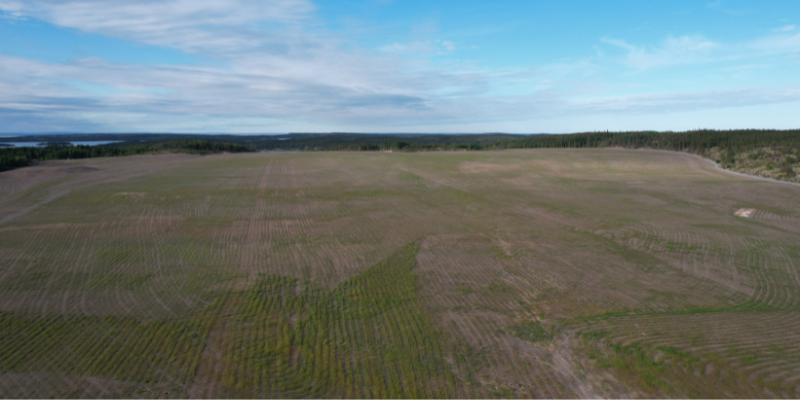
Aerial perspective of a revegetated tailings field at the Gunnar Mine and Mill Site in July 2022.
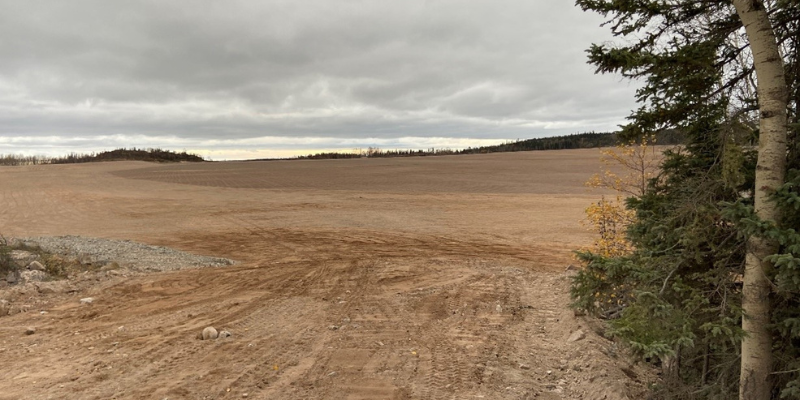
Freshly sown tailings field at Gunnar in Fall 2021.
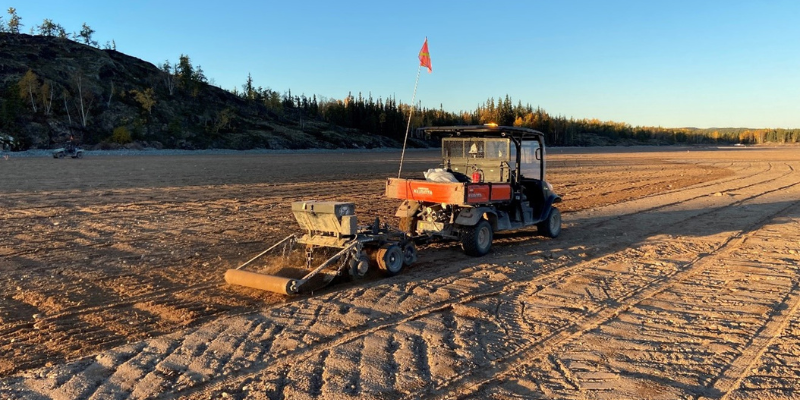
Plot seeder used for revegetation at Gunnar.
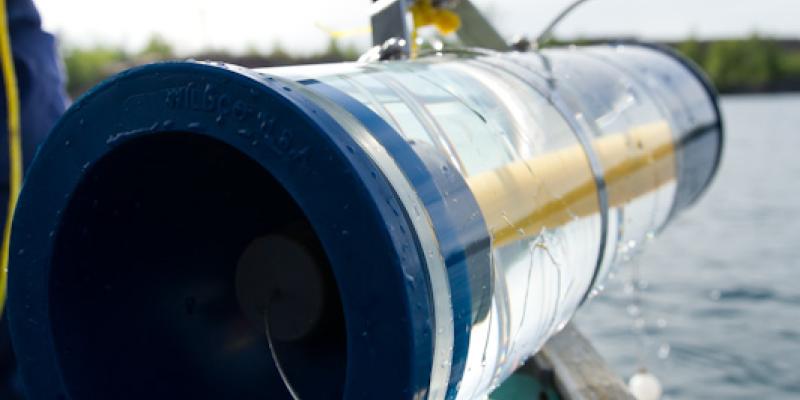
An SRC employee takes water samples from the Gunnar Mine pit to check for contaminants.
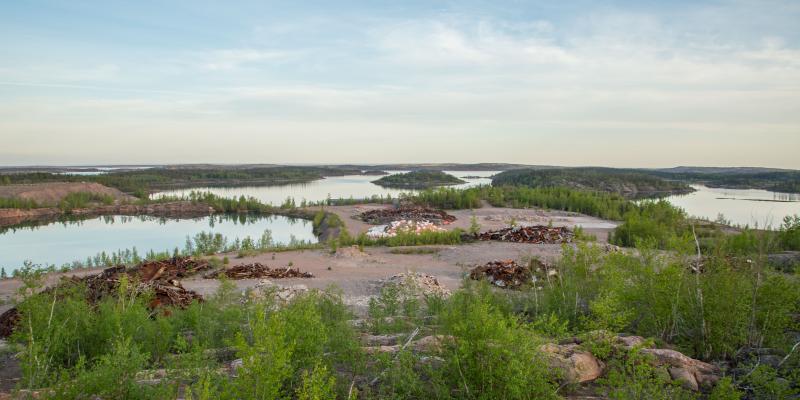
Gunnar Mine Site post-demolition, 2015.
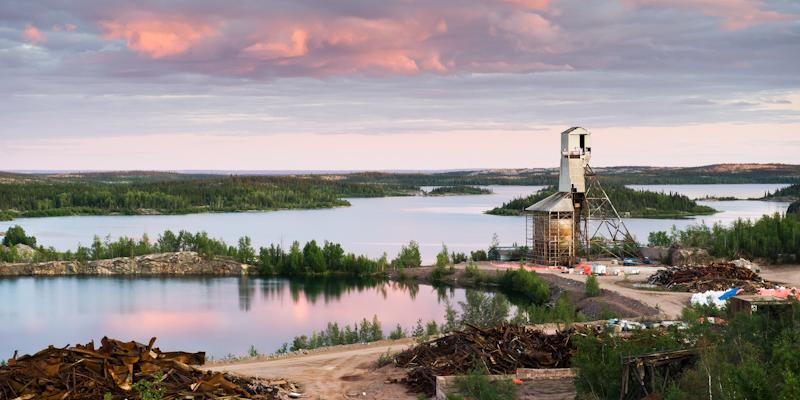
View of the Gunnar Mine Site during summer 2011. The buildings and headframe have since been removed due to safety concerns.
Gunnar Tailings and other site aspects
The 2022 construction season was full of accomplishments for the Gunnar Mine and Mill Site Remediation Project. SRC continued to cover areas with local borrow material to reduce radiation hazards.
All hazardous waste was placed in Landfill B, which was then sealed off with a layer of compacted clay and a thick layer of material to protect the waste from frost and erosion. This completes Landfill B construction and the disposal of all legacy hazardous waste on site!
Non-hazardous legacy debris around the site continued to be collected and placed in Landfill A. There was also substantial progress on re-establishing the historic drainage channel through the waste rock piles. Seeding occurred in the fall on all areas where cover was completed.
The completed tailings covers were inspected during Summer 2022. They are performing as anticipated: the vegetation established well and there is little sign of erosion on the covers’ surface. We are currently developing a transitional monitoring plan and will continue monitoring the tailings cover performance in the long term.
2023 work season
Over the winter, the Gunnar team reported on the 2022 season activities and planned for the 2023 work season. Materials, supplies and equipment were transported in and out on the winter ice road.
During the 2023 field season, the Gunnar team plans to finish constructing the historic drainage channel, collect all remaining legacy waste debris, complete all remaining gamma radiation cover placement and complete most of the remaining seeding.
Demolition activities included:
- Extensive asbestos abatement of buildings
- Demolition of more than 80 buildings and structures
- Cleaning up site debris
- Constructing a barrier around the open pit
- Removing physical, chemical, radiological and biological hazards
Regulatory oversight
As part of its regulatory oversight, the Canadian Nuclear Safety Commission (CNSC) implements the Independent Environmental Monitoring Program (IEMP) to verify monitoring carried out by licencees such as SRC. SRC is licenced under the Nuclear Safety and Control Act for the Lorado Mill and Gunnar Mine and Mill remediation projects. In 2023, CNSC staff collected samples in publicly accessible areas near the sites. A summary of the results is made available on the CNSC website. Please contact CNSC or SRC if you have any questions.
Contact us to learn more about the Gunnar Mine site clean up.
